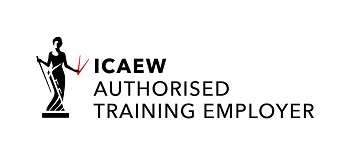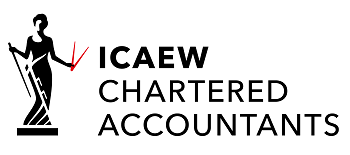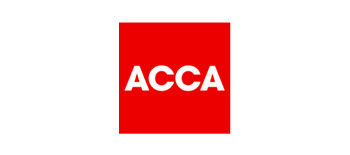
I’ll be honest with you – there’s money sitting in HMRC’s coffers that probably belongs to your business. It’s not some elaborate tax scheme or dodgy accounting trick. It’s legitimate VAT you’ve overpaid, and the government is perfectly happy to give it back. They’re just not going to knock on your door to tell you about it.
Most business owners I meet have this glazed look when VAT comes up in conversation. It’s that bureaucratic beast that demands quarterly attention, generates endless paperwork, and somehow always feels like you’re doing it wrong. But here’s what might surprise you: reclaiming VAT isn’t just about getting your regular input tax back. There’s a whole world of recoverable VAT that businesses miss, year after year.
When the Taxman Actually Owes You
The concept feels backwards, doesn’t it? We’re so conditioned to think of tax authorities as taking money that the idea of them owing us feels almost subversive. Yet VAT reclaims are perfectly normal – and often substantial.
Think about it this way: every time you pay VAT on business expenses, you’re essentially lending money to the government until your next return. But what happens when you’ve been paying VAT on things you shouldn’t have? Or when you’ve been charged the wrong rate? Or when you’ve paid twice for the same thing?
The most common scenarios for reclaiming VAT include:
- Overpaid VAT on construction services (this one’s massive in London)
- Incorrect VAT rates applied to specific goods or services
- VAT paid on items later returned or cancelled
- Double-charged VAT on international transactions
- Historical errors in VAT registration status
- Pre-registration expenses that qualify for recovery
I once worked with a small manufacturing business in South London that discovered they’d been paying standard rate VAT on specialised equipment that qualified for zero-rating. Six years of overpayments. The reclaim was worth more than their annual profit that year.
The Four-Year Window That Changes Everything
Here’s where timing becomes crucial for reclaiming VAT. HMRC gives you four years to spot and correct errors VAT errors and adjustments: some practical examples | Tax Adviser, but there are important nuances to understand. For missing VAT claims in the correct VAT period, you can claim input tax from up to four years back, provided the total amount is less than £10,000 or less than 1% of your total outputs (VAT excluded) with a limit of £50,000 How Far Back Can You Claim VAT On Expenses In UK? | Intertax.
This four-year rule creates an odd dynamic. Businesses often assume that because HMRC hasn’t challenged their VAT returns, everything must be correct. Meanwhile, HMRC assumes that if businesses haven’t claimed overpayments back, there weren’t any. It’s a bureaucratic standoff where money sits unclaimed in the middle.
The time limit isn’t just four years from today – it’s four years from the end of the accounting period in which the error was made. HMRC takes 40 working days to process VAT error corrections | Taxation. This distinction matters enormously when you’re dealing with historical overpayments.
Common areas where businesses discover historical overpayments:
- The construction industry is particularly notorious for VAT complications. Zero-rated work, reduced-rate renovations, standard-rate repairs – the boundaries shift depending on factors most builders never studied in detail. I’ve seen contractors charging themselves standard rate VAT on materials for zero-rated jobs, essentially paying a 20% penalty on their own purchases.
- Professional services present their own puzzle. Training courses, consultancy fees, software licenses – each category has specific VAT treatment that doesn’t always align with common sense. Legal fees might be standard-rated, exempt, or zero-rated depending on the exact nature of the service.

The Paper Trail That Pays
Reclaiming VAT requires evidence, and not just any evidence. HMRC wants to see a clear audit trail that proves both the original payment and the error. This is where many reclaim attempts falter.
| Document Type | What HMRC Needs | Common Issues | Retention Period |
| Original invoices | Clear VAT breakdown | Missing VAT numbers | 6 years minimum |
| Bank statements | Proof of payment | Payments split across months | 6 years minimum |
| Contracts | Evidence of service type | Vague descriptions | Duration + 6 years |
| Correspondence | Error acknowledgment | Informal communications | 6 years minimum |
| Credit notes | Adjustments/corrections | Missing reference numbers | 6 years minimum |
The reality is messier than any table suggests. Sometimes the strongest evidence comes from unlikely sources – email trails, delivery notes, or even photographs of work completed. HMRC doesn’t care how you prove your case, as long as you can prove it convincingly.
One client discovered a significant overpayment through their insurance claim documentation. They’d been charged VAT on building repairs that qualified for zero-rating, but the error only became apparent when the insurance assessor’s report detailed the exact nature of the work.
When Professional Help Makes Financial Sense
There’s a particular type of business owner who insists on handling every aspect of their company personally. I respect the impulse, but reclaiming VAT often requires specialist knowledge that takes years to develop properly.
The complexity isn’t just in identifying potential claims – it’s in presenting them to HMRC in a way that survives scrutiny. HMRC has confirmed a turnaround time of 40 working days in most cases, while more complex cases may take longer How to correct VAT errors and make adjustments. Tax officers see dozens of reclaim attempts every week, and they’re not obliged to help you strengthen weak arguments.
At Ask Accountant, we’ve seen businesses attempt DIY VAT reclaims only to have them rejected on technicalities. The same claims, properly documented and presented, often succeed completely. It’s not about having connections or insider knowledge – it’s about understanding exactly what HMRC needs to see.
Professional assistance becomes essential when:
- Claims exceed £10,000 (requiring separate notification to HMRC)
- Multiple tax years are involved
- The errors relate to complex transactions involving construction or property
- Previous DIY attempts have been rejected
- Time constraints mean you need it done quickly
- International transactions are involved
Understanding HMRC’s Error Correction Framework
Businesses can correct their VAT information from the 4 previous years by adjusting their next VAT returns, especially if the errors are of a net value not more than £10,000 or between £10,000 and £50,000 (but less than 1% of the total sales) How to Reclaim VAT: Overpayment, Bad Debt, & New Build {2024}.
This creates two distinct pathways for reclaiming VAT:
Method 1 – Adjustment on Next Return: For smaller errors (under £10,000 or under 1% of turnover up to £50,000), you can simply adjust your next VAT return. This is the quickest route but has strict limits.
Method 2 – Separate Notification: If an individual error is so large that it breaches the 1% or £50,000 limit, you should make an error correction report to HMRC immediately How to correct VAT errors and make adjustments or claims (VAT Notice 700/45) – GOV.UK. This involves more paperwork but handles larger amounts.
The Construction Industry’s VAT Minefield
If you’re in construction, you’re operating in VAT’s most complicated sector. The rules change based on the age of the building, the type of work, the client’s status, and sometimes what seems like the phase of the moon.
- New builds: zero-rated. Seems simple until you discover that “new build” has a specific technical definition that might not match reality. I’ve seen developers pay standard rate VAT on genuinely new constructions because they couldn’t prove the land was genuinely empty before work began.
- Conversions follow their own logic. Converting a barn to residential use? Probably zero-rated. Converting offices to flats? Standard rate, usually. Converting flats to bigger flats? Depends on whether it counts as renovation or new construction.
For construction businesses, reclaiming VAT often involves:
- Reviewing every project from the last four years to identify jobs where the wrong VAT treatment was applied. This isn’t a quick task – each project needs individual assessment based on its specific circumstances.
- Materials purchases frequently offer reclaim opportunities. Builders often pay standard rate VAT on materials destined for zero-rated work, then forget to reclaim the difference. Over four years, these small overpayments accumulate into substantial sums.
- Listed buildings and church properties have their own VAT rules that create frequent errors. Even experienced contractors often apply incorrect rates to specialist heritage work.

Professional Services: The Unexpected Complexity
You might assume that professional services – lawyers, accountants, consultants – have straightforward VAT arrangements. You’d be wrong.
- Training and education services operate under rules that seem designed by committee. Some training is exempt, some is zero-rated, some attracts standard rate VAT. The determining factors include who’s providing the training, who’s receiving it, what it covers, and how long it lasts.
- Financial services exemptions create their own problems. Insurance services might be exempt, but insurance-related consulting could be standard-rated. Investment advice might be exempt, but investment management could attract VAT.
- Software licensing occupies a special category of confusion. Cloud-based services, downloaded software, and traditional licenses each have different VAT treatment. Updates, support, and training services attached to software deals often carry different rates from the core product.
International Transactions: Where VAT Gets Weird
Reclaiming VAT on international transactions requires understanding rules that change based on the nature of goods or services, the countries involved, and the status of the parties.
- EU transactions (yes, this still matters post-Brexit) follow different rules from transactions with non-EU countries. Services supplied to EU businesses might be zero-rated, while the same services to EU consumers could attract UK VAT.
- Digital services have created entirely new categories of VAT confusion. Selling software to a German business? Probably zero-rated. Selling the same software to a German individual? UK VAT might apply. Selling through a digital platform? The platform might handle VAT, or they might not.
- Import VAT creates reclaim opportunities that businesses often miss. VAT paid on imported goods can usually be reclaimed, but the process requires specific documentation and timing. Many businesses pay import VAT then forget to claim it back on their next return.
Pre-Registration Expenses: A Hidden Opportunity
One area where businesses frequently miss reclaiming VAT opportunities is pre-registration expenses. You can reclaim VAT paid on goods or services bought before you registered for VAT if you bought them within 4 years for goods you still have or goods that were used to make other goods you still have Charge, reclaim and record VAT: Reclaim VAT on business expenses – GOV.UK.
However, for services received, the limitation period is six months Statute of limitations UK: What is and How does it Work?. This creates a narrow window for service-based reclaims but a much longer opportunity for goods.
Many growing businesses reach the VAT registration threshold and immediately focus on future compliance, completely forgetting about the substantial VAT they paid on setup costs, equipment, and initial stock purchases.
The Technology Trap
Modern business operates through digital platforms that don’t always handle VAT correctly. Amazon’s merchant services, eBay’s commercial accounts, PayPal’s business processing – each platform has its own interpretation of VAT rules, and they don’t always align with HMRC’s expectations.
- Marketplace selling creates particular complications. Who charges VAT? Who collects it? Who remits it to HMRC? The answers change based on the type of goods, the value of transactions, and the geographic location of buyers and sellers.
- Subscription services often involve automatic renewals that cross tax year boundaries in confusing ways. A service paid for in one tax year but delivered in another can create timing issues that result in overpaid VAT.
- Software-as-a-Service (SaaS) providers frequently struggle with VAT treatment. The same service might be zero-rated for business customers but standard-rated for consumers. Getting this wrong over four years can create substantial reclaim opportunities.

Red Flags That Signal Potential Claims
Certain patterns in your business operations almost guarantee VAT overpayments worth investigating:
- Monthly VAT bills that remain suspiciously consistent. Real business activity creates natural fluctuations in VAT liability. Perfectly steady monthly payments often indicate systematic errors in VAT treatment.
- Large differences between your VAT rate and industry averages. If your effective VAT rate is significantly higher than similar businesses, you’re probably paying VAT on things that should be zero-rated or exempt.
- Frequent changes to your product or service mix. Every time your business evolves, VAT treatment might change too. Many businesses continue applying old VAT rates to new activities.
- Regular dealings with construction, property, or financial services. These sectors have complex VAT rules that create frequent errors. Even businesses that only occasionally touch these areas often get the VAT treatment wrong.
The HMRC Perspective: What They’re Really Looking For
Understanding HMRC’s approach to VAT reclaims makes the process much smoother. Tax officers aren’t trying to prevent legitimate claims – they’re trying to prevent fraudulent ones.
HMRC focuses on three key questions:
- Can you prove the original error occurred?
- Can you demonstrate the financial impact?
- Are you claiming within the time limits?
Simple questions, but the evidence requirements can be complex. HMRC wants contemporaneous documentation – records created at the time the transactions occurred, not reconstructed afterwards.
They’re particularly suspicious of round numbers and convenient calculations. A claim for exactly £10,000 triggers more scrutiny than one for £9,847.63. The messy reality of business creates messy numbers, and HMRC knows this.
Interest on Overpayments: The Bonus You Didn’t Know About
Here’s something most businesses don’t realise: HMRC pays repayment interest on overpayments at the Bank of England base rate minus 1%, with a minimum rate of 0.5% Repayment interest on VAT credits or overpayments – GOV.UK. This replaced the old repayment supplement system from January 2023.
For large overpayments spanning multiple years, the interest can add substantial value to your claim. It’s not going to make you rich, but it’s money you’re entitled to receive.
Getting Your Documentation Right
The difference between successful and failed VAT reclaims often comes down to documentation quality. HMRC receives thousands of poorly documented claims that could have succeeded with better preparation.
Essential documentation includes:
- Original invoices showing VAT charges, but also subsequent credit notes, adjustments, or corrections that might affect the claim. The complete paper trail matters more than individual documents.
- Bank statements proving payment, but also evidence that payments relate to the specific transactions in your claim. Large businesses often have complex payment arrangements that obscure the connection between invoices and payments.
- Contracts or agreements that establish the true nature of transactions. HMRC often finds that the reality of business relationships differs from what invoice descriptions suggest.
- Correspondence that acknowledges errors or clarifies the nature of transactions. Email trails, meeting notes, or formal letters can provide crucial context for complicated claims.
What Ask Accountant Brings to the Table
At Ask Accountant, we’ve developed systematic approaches to identifying and claiming VAT overpayments that individual businesses rarely discover on their own. Our location at 178 Merton High St gives us daily exposure to London’s diverse business community, where VAT complications are particularly common.
Our comprehensive range of services – from inheritance tax and CIS claims to business advisory and bookkeeping – creates a holistic view of how VAT integrates with other business taxes. Often, VAT overpayments connect to other tax issues that need coordinated resolution.
We’ve handled enough reclaiming VAT cases to recognize patterns that indicate potential claims. What looks like normal business operation to you might represent systematic overpayments to trained eyes. Our proactive tax advisory solutions mean we can identify potential claims during routine work, rather than requiring separate VAT reviews that most businesses never commission.
Common Mistakes That Kill Claims
Even legitimate VAT reclaims fail due to presentation errors that HMRC treats as fatal flaws. Understanding these common mistakes saves time and increases success rates.
- Calculation errors undermine credibility. HMRC assumes that businesses capable of complex operations should be capable of accurate arithmetic. Simple calculation mistakes create suspicion about the entire claim.
- Missing deadlines, even by days. The four-year rule has no flexibility. Claims submitted four years and one day after the error occurred will be rejected, regardless of their merit.
- Inadequate evidence for claimed amounts. HMRC requires proof for every pound claimed. Estimates, approximations, or reconstructed figures need clear justification and supporting evidence.
- Failure to explain complex transactions. HMRC officers handle routine claims efficiently, but complex situations require detailed explanations. Assuming that officers will understand complicated circumstances without explanation often leads to rejection.
The Follow-Up Process
The process of VAT reclaim does not end after submitting the reclaim but starts with it. The reaction of HMRC can assume many forms, and each may presuppose various follow-up measures.
- Uncomplicated acceptance will normally lead to refund of 30 days. Nonetheless, statements labeled as straight-forward tend to raise other queries that require timely and correct answers.
- Partially accepted implies that HMRC accepts some parts of your request and denies others. The reasons that were given as grounds of rejection may represent other possible claims that you were not aware about.
- Rejection doesn’t necessarily end the process. HMRC’s initial assessments sometimes miss nuances of complex situations. Additional evidence or clearer explanations can turn rejections into acceptances.
Making the Numbers Work
The economics of reclaiming VAT need to make sense for your specific situation. Professional assistance costs money, but attempting complex claims without expertise often results in rejection and lost opportunities.
Consider the following calculation:
- Potential refund amount (including interest)
- Professional fees for assistance
- Time cost of DIY attempts
- Risk of rejection and lost opportunity
- Cash flow impact of delayed refunds
For claims under £5,000, DIY approaches often make sense if you have confidence in your record-keeping and understanding of VAT rules. Above this threshold, professional assistance usually pays for itself through higher success rates and faster processing.
The four-year window creates urgency that affects these calculations. A claim that might not justify professional fees today could become economically attractive as the deadline approaches.
Multiple years of potential overpayments often justify comprehensive reviews that identify claims you wouldn’t discover individually. The cumulative effect of small errors over four years often creates substantial refund opportunities.
If you’re sitting there wondering whether your business might have unclaimed VAT refunds waiting, the honest answer is: probably. The complexity of modern VAT rules, combined with the natural evolution of business activities, creates overpayment opportunities in most established businesses.
The question isn’t whether potential claims exist – it’s whether the effort required to identify and claim them makes financial sense for your specific situation. Sometimes a quick review reveals obvious opportunities that justify immediate action. Other times, comprehensive investigation uncovers systematic overpayments that have been accumulating for years.
Either way, that four-year window keeps ticking. Money you overpaid in 2021 becomes unrecoverable in 2025. If you’re going to investigate potential reclaiming VAT opportunities, sooner is better than later.
For businesses across the UK, Ask Accountant provides the expertise to identify, document, and successfully claim VAT overpayments that individual businesses rarely discover on their own. Our comprehensive business accounting services, combined with our proactive tax advisory approach, mean we spot these opportunities during regular business reviews. Contact us at +44(0)20 8543 1991 to discuss whether your business might benefit from a comprehensive VAT review.
The money is there. The question is whether you’ll claim it before the deadline passes.







